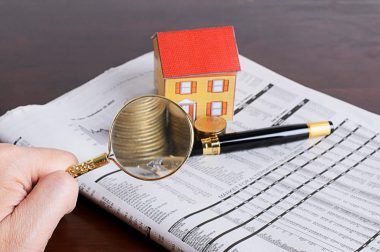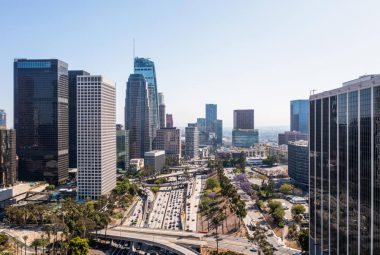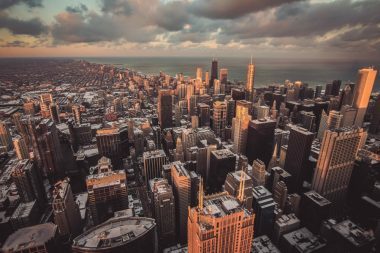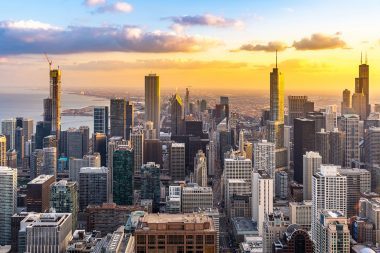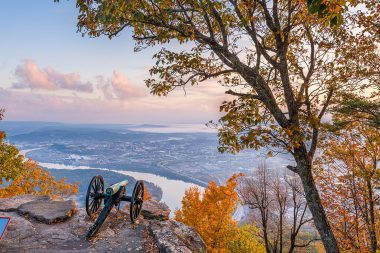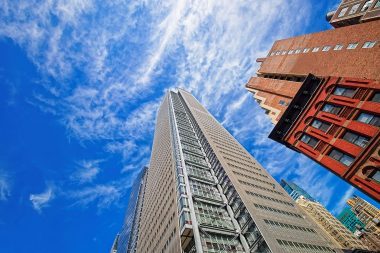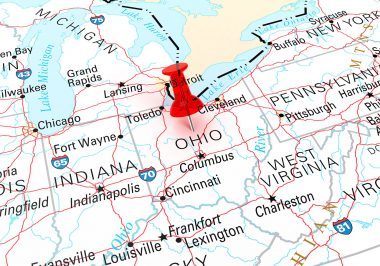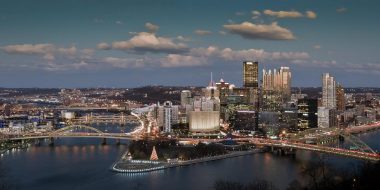Best Neighborhoods in Washington D.C.: Complete 2025 Guide for Families and Professionals
Updated Thu, Oct 23, 2025 - 23 min read
Top blog articles
There’s an undeniable aura around Washington, D.C. The political pulse, rich diversity, historic landmarks, expansive green spaces, vibrant social scene, and world-class cuisine create an atmosphere unlike any other American city. It’s no wonder the nation’s capital consistently ranks as one of the best places to live for millennials, young professionals, and families alike.
If you’re considering a move to D.C. and searching for the perfect neighborhood to call home, you’ve come to the right place. This comprehensive guide explores the best neighborhoods in Washington D.C., evaluating each area based on safety, local amenities, school quality, walkability, and overall livability.
What Makes a Washington D.C. Neighborhood Great?
Finding the right neighborhood in Washington D.C. is crucial for a contented life. According to recent data from the U.S. Department of Justice, violent crime in D.C. reached a 30-year low in 2024, with overall violent crime down 35% from 2023. This dramatic improvement, along with the city’s world-class amenities and cultural offerings, makes D.C. an increasingly attractive place to settle down.
When evaluating neighborhoods, we consider:
Safety & Security: Current crime statistics and neighborhood safety trends
Schools: Access to quality public and private schools
Amenities: Proximity to parks, restaurants, shopping, and entertainment
Transportation: Access to Metro lines and walkability scores
Community: Neighborhood character, demographics, and local culture
Real Estate: Home styles, prices, and property value trends
Keep in mind that each of these neighborhoods has its own distinct ambiance and appeal. What works perfectly for a young family may not suit a single professional, and vice versa.
Top 15 Best Neighborhoods in Washington D.C.
1. Georgetown: Historic Elegance Meets Modern Living
Georgetown stands as one of D.C.’s most prestigious and historic neighborhoods. Home to the renowned Georgetown University and recognized as a National Historic Landmark, this waterfront community showcases stunning 19th-century mansions, charming cobblestone streets, and the famous Embassy Row.
What Makes Georgetown Special:
- Safety: Consistently ranks as one of the safest neighborhoods in D.C.
- Shopping: High-end designers alongside unique boutiques, including H&M, Anthropologie, and local retailers
- Dining: World-class restaurants and cafes line M Street and Wisconsin Avenue
- Recreation: The gorgeous Georgetown Waterfront Park offers picnicking, bird watching, running trails, and peaceful riverside views
- Schools: Access to Washington International School and Georgetown Visitation Preparatory School
Housing: Expect to find historic Federal-style townhomes, Victorian row houses, and modern condominiums. Properties range from $800,000 to multi-million dollar estates.
Best For: Affluent professionals, academics, and families seeking historic charm with modern amenities
2. Capitol Hill: Political Heart with Community Soul
As one of D.C.’s largest and oldest neighborhoods, Capitol Hill extends beyond its famous government buildings to encompass a vibrant residential community. Home to the Supreme Court, Library of Congress, and the iconic Capitol Building on Pennsylvania Avenue, this historic district offers more than just political prestige.
What Makes Capitol Hill Special:
- History: Walking through living American history daily
- Eastern Market: A beloved institution since 1873, featuring fresh produce, artisans, and community gathering spaces
- Dining & Shopping: Vintage storefronts, independent bookstores, and acclaimed restaurants on Barracks Row
- Parks: U.S. Botanic Garden, Lincoln Park, and Stanton Park provide green spaces
- Community: Strong neighborhood associations and active resident engagement
Housing: Row houses dominate the landscape, ranging from Victorian townhomes to renovated Federal-style properties. The neighborhood witnessed major redevelopment in the 1980s and 1990s, which drove up property values. Expect prices from $600,000 for smaller row houses to $2+ million for larger, renovated homes.
Transit: Multiple Metro stops, including Capitol South, Eastern Market, and Union Station
Best For: Government employees, political professionals, history enthusiasts, and families willing to invest in a premium location
3. Dupont Circle: Cultural Hub with Urban Energy
Known for its post-Civil War era architecture and the iconic circular park at its center, Dupont Circle pulses with cultural energy. The neighborhood features the famous Dupont Circle farmers’ market (one of the area’s largest), art galleries, international embassies, and diverse dining options.
What Makes Dupont Circle Special:
- Culture: Numerous art galleries, bookstores, and cultural institutions
- Dining: From Ethiopian cuisine to contemporary American, the restaurant scene is unmatched
- Parks: The Central Park features stone chess tables where locals gather daily
- Nightlife: Vibrant bar and entertainment scene
- LGBTQ+ Friendly: Historically welcoming and inclusive community
Housing: Mix of row houses, historic apartment buildings, and modern condos. Both rental and purchase options are available, typically ranging from $400,000 for condos to $1.5+ million for townhomes.
Transit: Dupont Circle Metro station (Red Line) provides excellent connectivity
Important Note: As a popular tourist destination, parking is limited and streets can be busy, especially on weekends.
Best For: Young professionals, couples, cultural enthusiasts, and anyone who thrives in an urban environment
4. Logan Circle: Victorian Charm Meets Modern Trendsetting
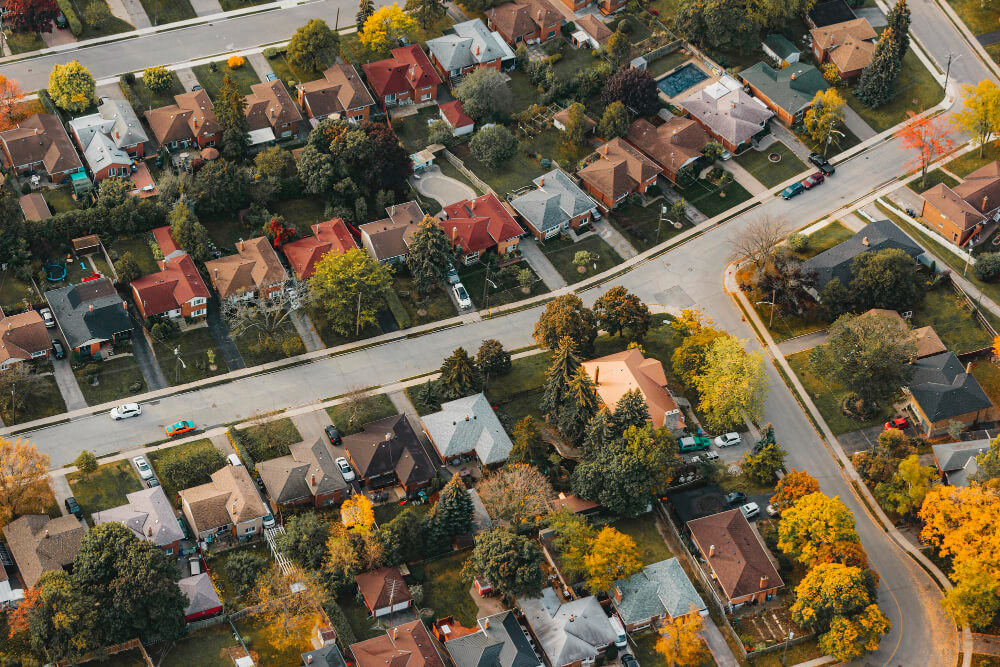
Comprising the Logan Circle Historic District and Fourteenth Street Historic District, this neighborhood has emerged as one of D.C.’s trendiest areas. The well-preserved Victorian-style homes and significant neighborhood redevelopment have attracted wealthy residents, young professionals, and families alike.
What Makes Logan Circle Special:
- Architecture: Authentic Victorian and Richardsonian Romanesque homes
- Safety: Superb safety rating following recent neighborhood improvements
- Restaurants: Award-winning dining establishments line 14th and U Streets
- Culture: Thriving arts scene with galleries, theaters, and music venues
- Schools: Access to highly rated public and private schools
Housing: Historic row houses and modern condos blend seamlessly. Prices range from $500,000 for condos to $2+ million for restored Victorian townhomes.
Community Character: The neighborhood has transformed from an economically challenged area in the 1980s to one of the city’s most desirable addresses, demonstrating successful urban revitalization.
Best For: Professionals, design enthusiasts, and families who appreciate history with modern amenities
5. Adams Morgan: Eclectic, Vibrant, and Family-Friendly
Adams Morgan may be compact, but it packs tremendous character. Adorned with beautiful 19th-century row houses, this diverse neighborhood offers everything a young family could want: community gardens, annual festivals (including the legendary Adams Morgan Day), exceptional restaurants, entertainment venues, and abundant green spaces, including Walter Pierce Park.
What Makes Adams Morgan Special:
- Diversity: One of D.C.’s most culturally diverse neighborhoods
- Dining: International cuisine from Ethiopian to Latin American
- Walkability: Highly walkable with excellent bike infrastructure
- Community: Strong neighborhood identity with active community gardens
- Entertainment: Live music venues, theaters, and nightlife
Housing: Primarily row houses and small apartment buildings. Prices range from $450,000 to $1.2 million, depending on size and condition.
Transit: While no Metro station is directly in the neighborhood, both Woodley Park-Zoo/Adams Morgan (Red Line) and Columbia Heights (Green/Yellow Lines) are within walking distance
Lifestyle Note: The neighborhood is lively, especially on weekends. If you prefer quiet, this may not be your ideal fit, but if you love community energy, it’s perfect.
Best For: Young families, cultural enthusiasts, renters, and anyone who values diversity and community spirit
6. Tenleytown: Family-Focused Residential Haven
Don’t let the name fool you (it was named after tavern owner John Tennally). Tenleytown is anything but wild; it’s actually one of D.C.’s premier family neighborhoods. This upper Northwest community offers an eclectic mix of residents, cultures, and cuisines alongside excellent schools and safe streets.
What Makes Tenleytown Special:
- Schools: Janney Elementary School (rated 9/10) and numerous other highly-rated public and private options
- Safety: Consistently low crime rates
- Shopping: Proximity to Friendship Heights and the Tenleytown-AU Metro station area shopping district
- Green Space: Fort Reno Park, Glover-Archbold Park, and Battery Kemble Park nearby
- Universities: American University campus borders the neighborhood
Housing: Mix of single-family homes, townhouses, and apartment buildings. Prices range from $600,000 to $1.8 million for single-family homes.
Community Character: According to NeighborhoodScout, Tenleytown ranks among the safest D.C. neighborhoods.
Best For: Families with school-age children, university faculty, government employees, and those seeking a quiet residential feel
7. Bloomingdale: Historic Charm Close to the Capitol
Located near the United States Capitol Building, Bloomingdale has been recognized as a historic district showcasing beautifully renovated architecture. The neighborhood successfully balances historic preservation with modern urban living.
What Makes Bloomingdale Special:
- Architecture: Renovated brick single-family homes, Victorian townhomes, and two-story condos
- Green Spaces: Crispus Attucks Park and LeDroit Park provide neighborhood gathering spots
- Sunday Markets: The local farmers’ market has become a community institution
- Cafes & Restaurants: Thriving local food scene on Rhode Island Avenue
- Gardens: Picturesque private and community gardens throughout
Housing: A Variety of options caters to different household sizes and budgets. Renovated Victorians range from $700,000 to $1.3 million, while condos start around $400,000.
Transit: Close to NoMa-Gallaudet U and Union Station Metro stops
Best For: History lovers, condo buyers vs renters, young professionals, and families who want historic character with urban convenience
8. Chevy Chase: Small-Town Feel, Big-City Access
Chevy Chase offers the best of both worlds: close proximity to downtown D.C. while maintaining a charming small-town atmosphere. This quiet, affluent neighborhood has become a magnet for young families and couples looking to settle down.
What Makes Chevy Chase Special:
- Family-Friendly: Abundant playgrounds, parks, and green spaces
- Community: Friendly neighbors and strong community bonds
- Safety: Excellent safety ratings
- Schools: Access to some of the region’s top-rated schools
- Peace & Quiet: Residential streets with minimal traffic
Housing: Primarily single-family homes ranging from $900,000 to $2+ million. Architectural styles include Colonial, Tudor, and Cape Cod designs.
Trade-Offs: Limited dining and entertainment options within the immediate neighborhood, but downtown amenities are a short drive or Metro ride away.
Transit: Friendship Heights Metro station (Red Line)
Best For: Families with children, retirees, and professionals who prefer suburban tranquility with city access
9. Foggy Bottom: Historic Riverside Living
Don’t be deterred by the name (derived from the area’s historic fog from the Potomac River and local industries). Today, Foggy Bottom is a bright, vibrant neighborhood with a culture all its own and impressive safety credentials.
What Makes Foggy Bottom Special:
- Safety: One of the safest neighborhoods in D.C.
- Culture: Home to the Kennedy Center for the Performing Arts, attracting world-class artists
- Universities: George Washington University anchors the community
- Recreation: Rock Creek Park offers hiking, biking, and outdoor activities
- Dining: Upscale restaurants and historic whiskey bars
- Views: Scenic Potomac River vistas
Housing: Lovely row houses dating back to the 1800s are available for rent or purchase. Condos range from $350,000 to $700,000, while historic row houses start around $800,000.
Transit: Foggy Bottom-GWU Metro station (Orange, Blue, and Silver Lines)
Best For: University faculty and students, performing arts enthusiasts, young professionals, and history buffs
10. Penn Quarter / Chinatown: Entertainment Central
These two distinct neighborhoods have overlapping borders and share status as D.C.’s entertainment heart. The area buzzes with energy from the Capital One Arena, the Smithsonian American Art Museum, the National Portrait Gallery, and the stunning Friendship Archway representing Washington-Beijing collaboration.
What Makes Penn Quarter/Chinatown Special:
- Entertainment: Sports events, museums, theaters, and nightlife
- Dining: Diverse culinary scene from authentic Asian cuisine to American fine dining
- Culture: Multiple galleries and cultural institutions
- Business: Home to high-tech companies and major corporate headquarters
- Urban Living: True city experience with everything at your doorstep
Housing: The area is experiencing ongoing transformation with new residential developments. This creates opportunities for bargains on rents and mortgages, making it attractive for newcomers and young couples. Condos range from $300,000 to $600,000.
Transit: Gallery Place-Chinatown Metro station (Red, Green, and Yellow Lines)
Community Note: While historically home to Chinese immigrants, the neighborhood now features residents from diverse backgrounds.
Best For: Young singles, couples, sports fans, and anyone who wants to be in the center of the action
11. Navy Yard: Transformation Success Story
Once an active shipyard, Navy Yard now serves as the administrative center for the U.S. Navy while offering one of D.C.’s most dramatic neighborhood transformation stories. Extensive redevelopment over the past two decades has created a modern, amenity-rich community with numerous projects still in the pipeline.
What Makes Navy Yard Special:
- Modern Development: New residential and commercial buildings with contemporary amenities
- Parks: Waterfront parks and outdoor recreation spaces
- Boardwalk: The Anacostia Riverwalk Trail offers scenic walking and biking
- Fountain: Spectacular dancing fountain illuminated at night (Yard’s Park)
- Dining: Rapidly expanding restaurant scene
Housing: Predominantly modern condos and apartments in newly constructed buildings. Prices range from $350,000 to $700,000 for condos.
Transit: Navy Yard-Ballpark Metro station (Green Line)
Future Potential: With significant development ongoing, this neighborhood is poised for continued growth and appreciation.
Best For: Young professionals, Nationals fans, tech workers, and investors looking for growth potential
12. Forest Hills (Van Ness): International Suburban Sanctuary
Also known as Van Ness, this prosperous, suburban-feeling neighborhood stands apart with its international character. Housing numerous embassies and showcasing stunning Colonial-style homes, Forest Hills attracts diplomats, international professionals, and families seeking a low-stress lifestyle with full urban amenities.
What Makes Forest Hills Special:
- International Flair: Embassy presence creates a diverse, sophisticated atmosphere
- Architecture: Beautiful Colonial, Tudor, and contemporary homes
- Safety: Exceptional attention to resident security
- Green Spaces: Proximity to Rock Creek Park and other nature areas
- Quiet: Peaceful streets with suburban character
Housing: High-end market with homes ranging from $1.2 million to $4+ million. Properties feature larger lots compared to central D.C.
Transit: Van Ness-UDC Metro station (Red Line)
Trade-Offs: Premium prices reflect the neighborhood’s exclusivity and amenities.
Best For: Diplomatic families, international professionals, and affluent buyers seeking suburban peace with urban access
13. Clarendon (Arlington): Gateway for Aspiring Professionals
While technically in Arlington, Virginia, Clarendon deserves mention as a neighborhood of choice for those launching government careers or seeking proximity to D.C.’s opportunities. This up-and-coming area has become synonymous with young ambition.
What Makes Clarendon Special:
- Demographics: High percentage of young professionals and singles
- Housing: Modern loft apartments and contemporary buildings
- Shopping: Fashionable boutiques and eclectic shops along Clarendon Boulevard
- Dining: Diverse restaurant scene from casual to upscale
- Military-Friendly: Close to the Pentagon and other military installations
- Value: More affordable than comparable D.C. neighborhoods
Housing: Primarily apartments and condos ranging from $300,000 to $550,000.
Transit: Clarendon Metro station (Orange and Silver Lines)
Best For: Young professionals, military families, singles, and government contractors
14. Foxhall Crescent (Berkley): Parks and Prestige
The Crescent, also known as Berkley, offers suburban tranquility adjacent to three major parks: Wesley Heights, Battery Kemble, and Glover-Archbold. This affluent neighborhood provides an escape from urban hustle while maintaining quick access to downtown when needed.
What Makes Foxhall Crescent Special:
- Nature: Surrounded by expansive parkland and green spaces
- Schools: Quality local schools and proximity to George Washington University’s Mount Vernon Campus
- Safety: Low crime rates in a quiet, family-oriented setting
- Privacy: Secluded feeling despite proximity to the city
- Architecture: Mix of Colonial, Tudor, and contemporary estate homes
Housing: Luxury market with homes ranging from $1.5 million to $5+ million on larger lots.
Best For: Affluent families, nature lovers, and professionals seeking privacy with convenience
15. Cleveland Park: Tree-Lined Streets and Top Schools
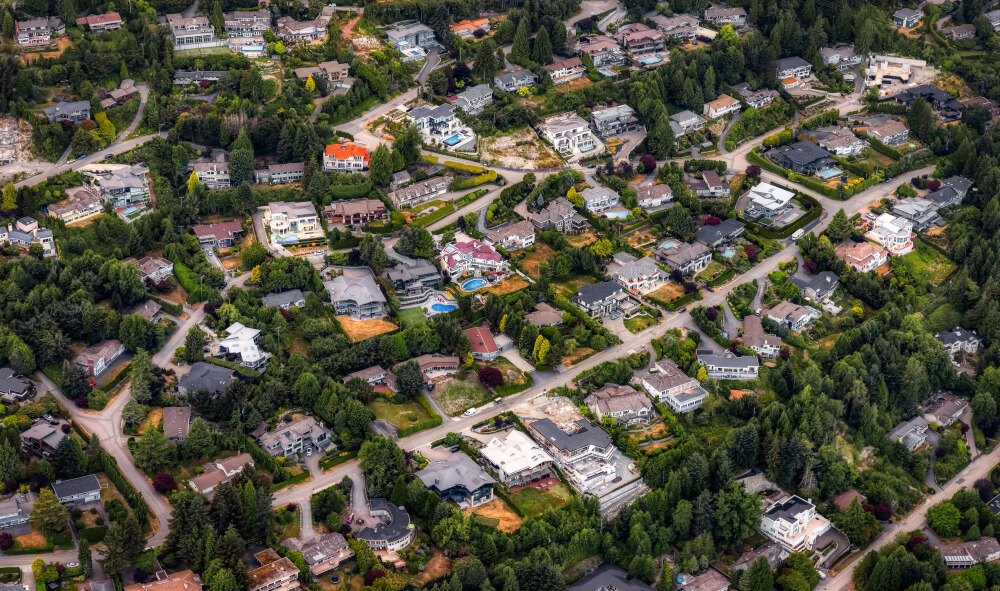
While not in the original article, Cleveland Park deserves mention as home to more top-ranked schools than any other D.C. neighborhood. According to education experts, this Northwest neighborhood is ideal for families prioritizing education.
What Makes Cleveland Park Special:
- Schools: Sidwell Friends School, Maret School, and National Cathedral School
- Architecture: Victorian, Queen Anne, and Art Deco homes
- Commute: Just 10 minutes from downtown D.C.
- Nature: Proximity to Rock Creek Park and the National Zoo
- Community: Strong family-oriented neighborhood culture
Housing: Historic homes and renovated properties ranging from $800,000 to $2.5 million.
Transit: Cleveland Park Metro station (Red Line)
Best For: Families with school-age children prioritizing educational excellence
Understanding D.C.’s Safety Landscape
Safety is often the primary concern for families and professionals considering a move to Washington D.C. The good news: crime has decreased dramatically in recent years.
Crime Statistics Update (2024-2025)
According to the U.S. Department of Justice, violent crime in Washington D.C. reached a historic 30-year low in 2024:
- Overall violent crime: Down 35% from 2023
- Homicides: Down 32%
- Robberies: Down 39%
- Armed carjackings: Down 53%
- Assaults with dangerous weapons: Down 27%
These improvements reflect targeted law enforcement strategies, community investment, and neighborhood revitalization efforts across the city.
Safest D.C. Neighborhoods
According to NeighborhoodScout data, the safest neighborhoods in D.C. include:
- Georgetown – Consistently the safest area with crime rates well below city averages
- Tenleytown/American University Park – Upper Northwest neighborhoods with excellent safety records
- Foggy Bottom – University presence and tourist activity contribute to enhanced security
- Forest Hills/Van Ness – Affluent areas with low crime rates
- Cleveland Park – Family-friendly with strong community watch programs
Safety Considerations When Choosing a Neighborhood
- Research crime statistics for specific blocks, not just neighborhoods
- Visit areas at different times of day to gauge comfort levels
- Talk to current residents about their experiences
- Consider proximity to Metro stations (well-lit, high-traffic areas tend to be safer)
- Factor in your lifestyle and comfort with urban environments
D.C. School Quality: Public and Private Options
For families with children, school quality often determines neighborhood choice. Washington D.C. offers both excellent public schools and prestigious private institutions.
Public School Landscape
DC Public Schools (DCPS) has made significant strides in recent years. According to Niche, while the overall district receives a B+ rating, individual schools vary considerably in quality.
Top-Rated D.C. Public Schools:
- Benjamin Banneker High School: Overall rating 10/10, 100% college acceptance rate
- School Without Walls High School: Rigorous academic program, college prep focus
- Janney Elementary School: Rating 9/10, strong STEM and arts programs
- Key Elementary School: Rating 9/10, test scores consistently 75-85% proficiency
Private School Excellence
D.C.’s private school landscape is nationally renowned:
- Sidwell Friends School (Cleveland Park): Perhaps the most famous private school in America, attended by many prominent families
- Georgetown Day School: Consistently ranked among the nation’s top private schools
- Maret School (Woodley Park): 6:1 student-teacher ratio, grades K-12
- National Cathedral School (Cleveland Park): All-girls institution, grades 4-12
- Washington International School (Georgetown): French and Spanish immersion programs
Important Note: Average private school tuition in D.C. is approximately $30,000 annually. Research financial aid options if considering private education.
Neighborhoods with Best School Access
For Public Schools:
- Capitol Hill (proximity to excellent charters and DCPS schools)
- Tenleytown (Janney Elementary, Alice Deal Middle School)
- Bloomingdale (access to highly-rated charter schools)
For Private Schools:
- Georgetown (multiple prestigious private schools)
- Cleveland Park (highest concentration of top-rated private schools)
- Woodley Park (Maret School and others)
Transportation and Walkability in D.C. Neighborhoods
One of D.C.’s greatest advantages is its extensive public transportation system and walkable neighborhoods.
Metro Access by Neighborhood
Red Line Neighborhoods:
- Dupont Circle
- Logan Circle (nearby)
- Woodley Park
- Cleveland Park
- Tenleytown
- Forest Hills/Van Ness
Orange/Blue/Silver Line Neighborhoods:
- Foggy Bottom
- Clarendon (Arlington)
Green/Yellow Line Neighborhoods:
- Navy Yard
- Capitol Hill (Eastern Market)
Multiple Lines:
- Penn Quarter/Chinatown (Red, Green, Yellow)
Most Walkable D.C. Neighborhoods
According to Walk Score data:
- Dupont Circle – 98/100 (Walker’s Paradise)
- Penn Quarter/Chinatown – 98/100
- Adams Morgan – 96/100
- Logan Circle – 95/100
- Georgetown – 93/100 (though no Metro station)
Biking in D.C.
D.C. has invested heavily in bike infrastructure:
- Over 100 miles of bike lanes citywide
- Capital Bikeshare stations throughout the city
- Adams Morgan, Logan Circle, and Dupont Circle are particularly bike-friendly
D.C. Real Estate Market Trends and Pricing (2025)
Understanding the real estate market helps you make informed decisions about buying a house in D.C.
Average Home Prices by Neighborhood (2025)
| Neighborhood | Median Home Price | Price Range |
|---|---|---|
| Georgetown | $1.4M | $800K – $4M+ |
| Capitol Hill | $900K | $600K – $2.5M |
| Dupont Circle | $750K | $400K – $1.8M |
| Logan Circle | $850K | $500K – $2.5M |
| Adams Morgan | $650K | $450K – $1.3M |
| Tenleytown | $950K | $600K – $2M |
| Bloomingdale | $725K | $400K – $1.5M |
| Chevy Chase | $1.3M | $900K – $2.5M+ |
| Foggy Bottom | $525K | $350K – $1M |
| Penn Quarter/Chinatown | $425K | $300K – $700K |
| Navy Yard | $500K | $350K – $750K |
| Forest Hills | $1.8M | $1.2M – $5M+ |
| Clarendon | $425K | $300K – $600K |
| Foxhall Crescent | $2.2M | $1.5M – $5M+ |
Note: Prices reflect median sale prices for condos and homes. Single-family homes typically command premium pricing.
Market Conditions
According to comparable home sales data from recent months:
- Inventory: Moderate supply with increased construction in the Navy Yard and Penn Quarter
- Days on Market: 25-45 days for well-priced properties
- Competition: Multiple offers are common in Georgetown, Capitol Hill, and Logan Circle
- Price Trends: Steady appreciation of 4-6% annually in established neighborhoods
- Investment Potential: Navy Yard and Penn Quarter show the strongest growth potential
Considerations When Buying in D.C.
- Property Taxes: D.C. has relatively high property taxes (0.85% average) but offers homestead deductions
- Condo Fees: Urban condos often have substantial HOA fees ($300-$800/month)
- Parking: Garage parking adds $30,000-$60,000 to property value
- Historic Districts: Restrictions on renovations in historic areas
- Future Development: Research upcoming construction projects that might affect property values
Lifestyle Considerations: Matching Neighborhood to Your Needs
Best Neighborhoods for Young Professionals
Top Choices:
- Dupont Circle – Walkability, nightlife, urban energy
- Logan Circle – Trendy restaurants, modern vibe
- Penn Quarter/Chinatown – Entertainment, affordability
- Navy Yard – Modern amenities, young demographic
- Clarendon – Government career launching pad
What to Look For:
- Proximity to the Metro for commuting
- Walkable restaurants and entertainment
- Co-working spaces and cafes
- Social scene and community events
Best Neighborhoods for Families
Top Choices:
- Tenleytown – Excellent schools, safe streets, parks
- Chevy Chase – Suburban feel, family-friendly
- Cleveland Park – Top-rated schools, community atmosphere
- Adams Morgan – Diverse, vibrant, community gardens
- Forest Hills – Spacious homes, quiet streets
What to Look For:
- School quality and accessibility
- Parks and playgrounds
- Low crime rates
- Family-oriented community events
- Yard space and room to grow
Best Neighborhoods for Retirees
Top Choices:
- Georgetown – Cultural amenities, walkability
- Foggy Bottom – Kennedy Center, safe streets
- Chevy Chase – Quiet, established community
- Forest Hills – Peaceful, upscale
- Capitol Hill – Historic, engaged community
What to Look For:
- Healthcare access
- Cultural activities (museums, theaters)
- Walkability and public transit
- Safe, quiet streets
- Community engagement opportunities
Best Neighborhoods for Investors
Top Choices:
- Navy Yard – Ongoing development, appreciation potential
- Penn Quarter/Chinatown – Transformation opportunities
- Bloomingdale – Emerging neighborhood, gentrification potential
- Clarendon – Rental demand from young professionals
- Logan Circle – Established an appreciation trend
What to Look For:
- Future development plans
- Rental demand and yields
- Transit expansion
- Neighborhood trajectory
- Property condition and renovation potential
D.C. Neighborhood Amenities and Attractions
Parks and Recreation
Major Parks:
- Rock Creek Park (1,754 acres) – Hiking, biking, picnicking, nature center
- Meridian Hill Park (Malcolm X Park) – Sunday drum circles, beautiful fountains
- Georgetown Waterfront Park – Riverside walking, picnics, bird watching
- U.S. Botanic Garden – Free admission, stunning plant collections
Neighborhood Parks:
- Walter Pierce Park (Adams Morgan)
- Logan Circle Park (Logan Circle)
- Lincoln Park (Capitol Hill)
- Fort Reno Park (Tenleytown)
- Yard’s Park (Navy Yard)
Cultural Institutions
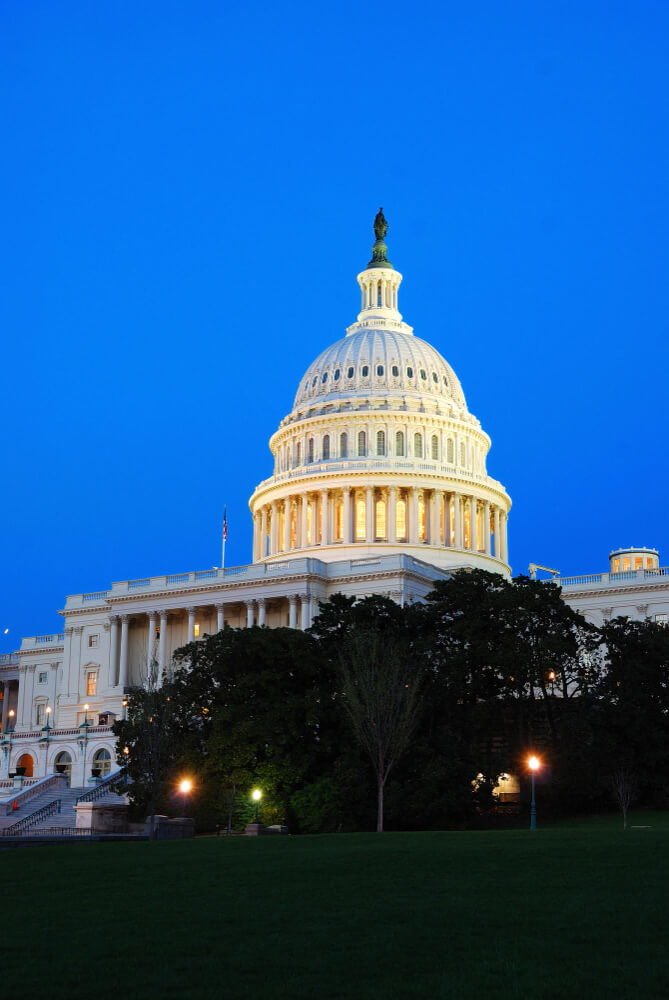
World-Class Museums (Free Admission):
- Smithsonian American Art Museum
- National Portrait Gallery
- National Museum of African American History and Culture
- Library of Congress (Capitol Hill)
Performing Arts:
- Kennedy Center for the Performing Arts (Foggy Bottom)
- Arena Stage (Navy Yard)
- Ford’s Theatre (Downtown)
Dining Scenes by Neighborhood
Best Restaurant Neighborhoods:
- Georgetown – Upscale dining, waterfront restaurants
- Dupont Circle – International cuisine, cafe culture
- Adams Morgan – Diverse ethnic foods, late-night dining
- Logan Circle/14th Street – Award-winning restaurants, trendy bars
- Capitol Hill – Neighborhood bistros, Barracks Row scene
Practical Tips for Moving to D.C.
Before You Move
Research Phase:
- Visit neighborhoods multiple times at different hours
- Attend community meetings or events
- Talk to residents about their experiences
- Check property zoning if considering renovations
- Review real estate investment potential
Financial Preparation:
- Get pre-approved for a mortgage
- Budget for D.C.’s cost of living (15-20% higher than national average)
- Account for parking costs ($200-$400/month in many neighborhoods)
- Consider property tax implications
Finding the Right Home
Work with Local Experts:
- Choose a realtor familiar with your target neighborhoods
- Consider hiring contractors early if renovations are needed
- Get home inspections in older neighborhoods like Georgetown and Capitol Hill
Ask the Right Questions:
- What are typical utility costs?
- Are there planned developments nearby?
- What’s the parking situation?
- How’s the cell phone reception? (D.C. buildings can block signals)
- What are HOA rules and fees?
After You Move
Become a Good Neighbor:
- Introduce yourself to neighbors
- Join neighborhood associations
- Attend community events
- Follow good neighbor practices
- Address any common neighborhood problems proactively
Frequently Asked Questions About D.C. Neighborhoods
Q: Is Washington D.C. safe to live in? A: Yes, D.C.’s safety has improved dramatically. Violent crime reached a 30-year low in 2024, down 35% from 2023. However, safety varies by neighborhood. Georgetown, Tenleytown, and Forest Hills consistently rank as the safest areas.
Q: What’s the most affordable neighborhood in D.C.? A: Penn Quarter/Chinatown and Navy Yard offer some of the most affordable housing options, with condos starting around $300,000. Clarendon (in Arlington) also provides good value for D.C. metro area living.
Q: Which D.C. neighborhood has the best schools? A: Cleveland Park has the highest concentration of top-rated private schools, including Sidwell Friends and National Cathedral School. For public schools, Tenleytown (Janney Elementary) and Capitol Hill areas offer excellent options.
Q: Do I need a car in Washington D.C.? A: Not necessarily. Neighborhoods with high Walk Scores (Dupont Circle, Adams Morgan, Logan Circle) and good Metro access make car-free living very feasible. However, families may prefer having a car for shopping and activities.
Q: What’s the average rent in Washington D.C.? A: Average rents vary significantly by neighborhood. Expect $2,000-$2,500/month for a one-bedroom in popular neighborhoods, $2,800-$3,500 for a two-bedroom.
Q: Which neighborhood is best for young professionals? A: Dupont Circle, Logan Circle, and Penn Quarter/Chinatown are top choices for young professionals, offering walkability, nightlife, restaurants, and proximity to government and private-sector jobs.
Q: Are D.C. property taxes high? A: D.C.’s property tax rate averages 0.85%, higher than many states but comparable to other major cities. Homestead deductions can reduce the burden for primary residences.
Q: What’s the best time to buy a home in D.C.? A: Spring and fall typically see the most inventory. However, winter months may offer less competition and better negotiating power. The D.C. market remains strong year-round.
Final Thoughts: Finding Your Perfect D.C. Neighborhood
Washington, D.C. offers something for everyone, whether you’re seeking historic charm, modern amenities, family-friendly suburbs, or urban excitement. The city’s dramatic safety improvements, world-class cultural institutions, excellent public transportation, and diverse neighborhoods make it an increasingly attractive place to call home.
When you arrive in the nation’s capital, you’ll be mesmerized by the expansive green spaces, iconic monuments, vast museums, and of course, the White House. But beyond the tourist attractions, you’ll find vibrant communities, welcoming neighbors, and neighborhoods that feel like home.
Remember These Key Takeaways:
✅ Safety is improving – D.C. crime is at 30-year lows ✅ Schools vary widely – Research thoroughly for family needs ✅ Transit is excellent – Metro access greatly enhances quality of life ✅ Neighborhoods have distinct personalities – Visit multiple times before deciding ✅ Investment potential – Navy Yard and Penn Quarter show strong growth ✅ Professional advice matters – Work with experienced local realtors and contractors.
Whether you choose the historic elegance of Georgetown, the political heart of Capitol Hill, the cultural energy of Dupont Circle, or the family-friendly streets of Tenleytown, you’re joining one of America’s most dynamic and improving cities.
Ready to make Washington D.C. your home? Start by narrowing down your top 3-5 neighborhoods based on your priorities, then visit each area multiple times. Talk to residents, explore local businesses, and imagine your daily life there. With careful research and the right neighborhood match, you’ll find the perfect place to enjoy everything the nation’s capital has to offer.
Need help with your move? Find qualified contractors for any renovations, and explore other great neighborhoods across America in our guides to the best neighborhoods in Las Vegas, West Palm Beach, and Toledo, Ohio.
